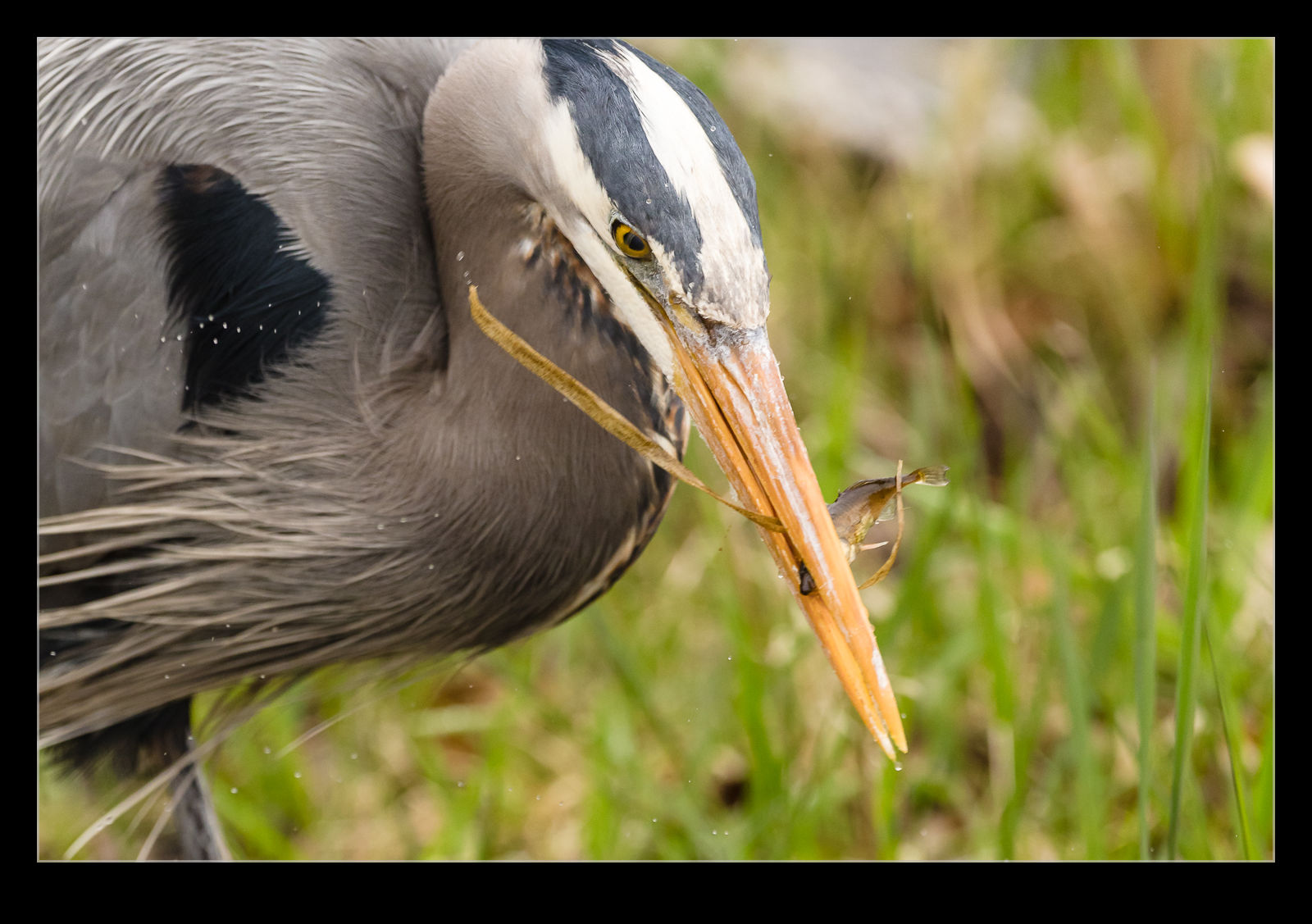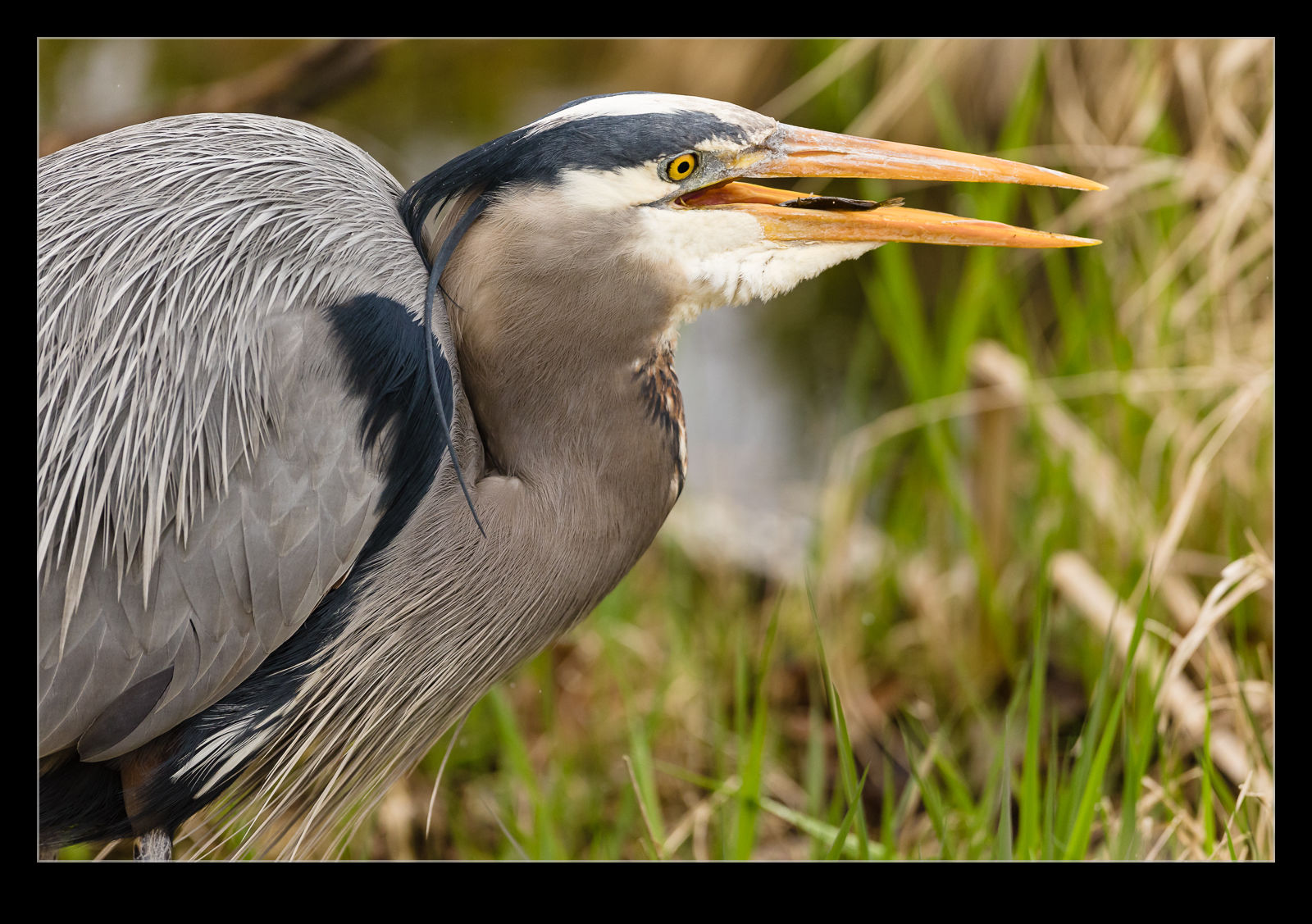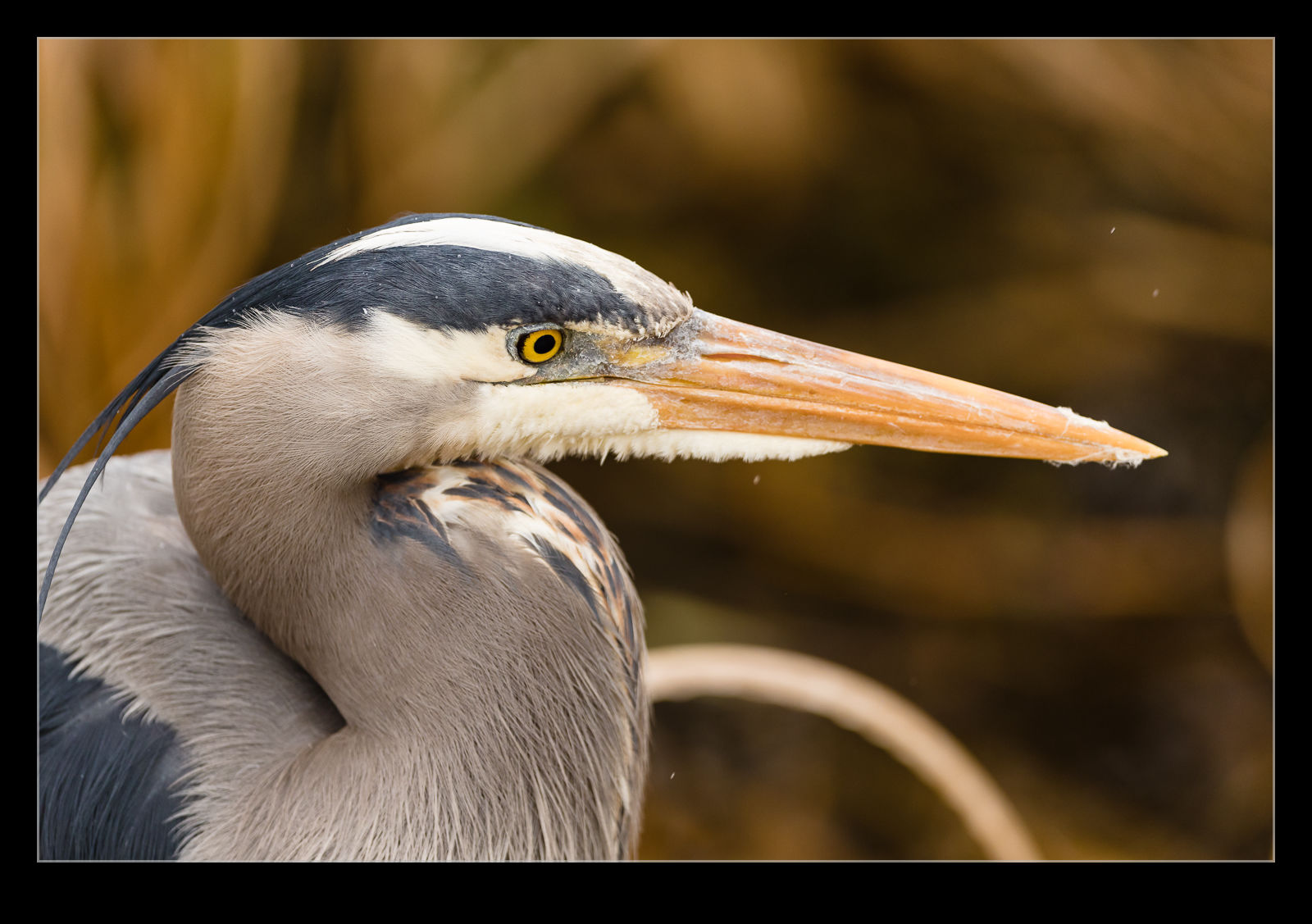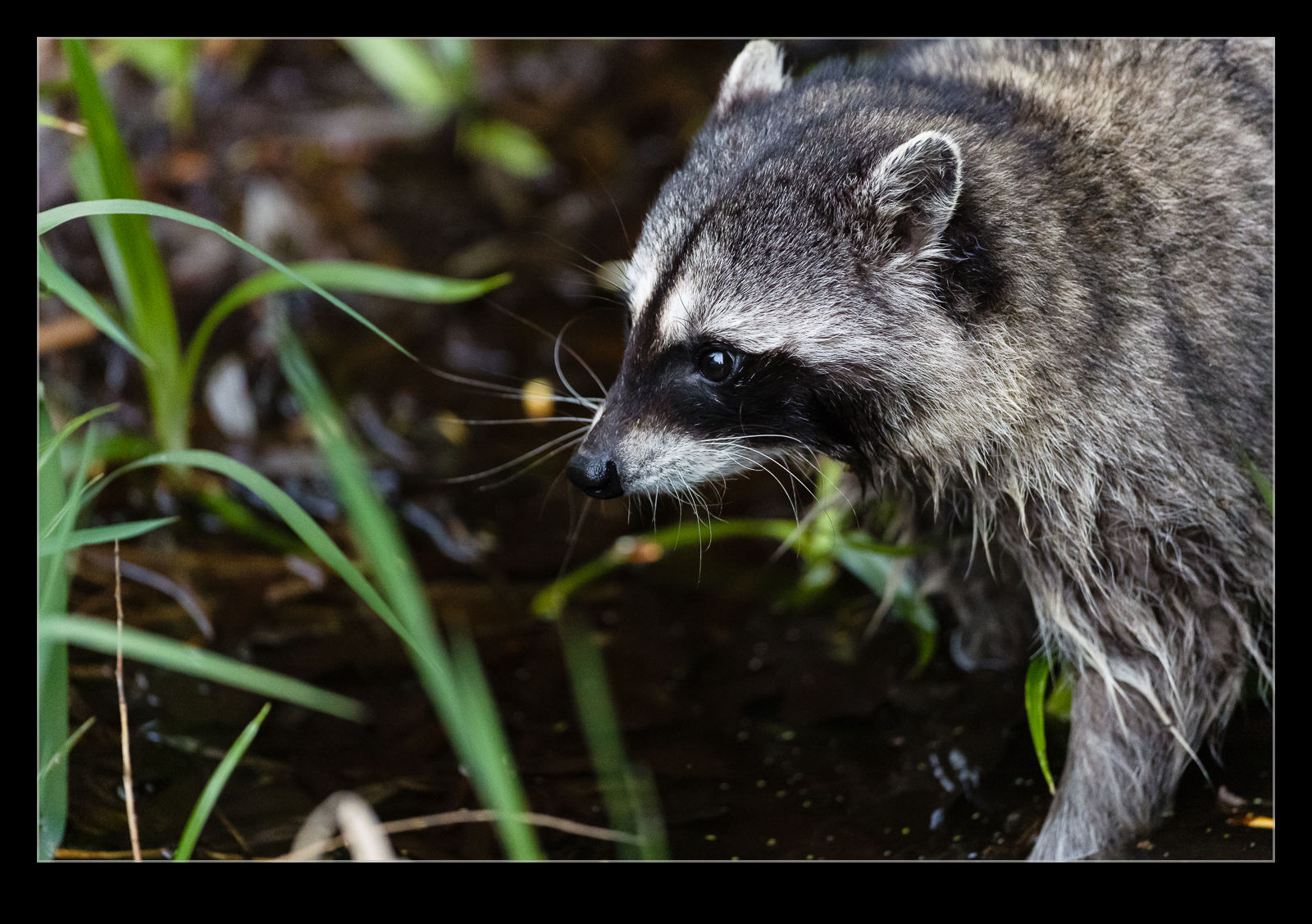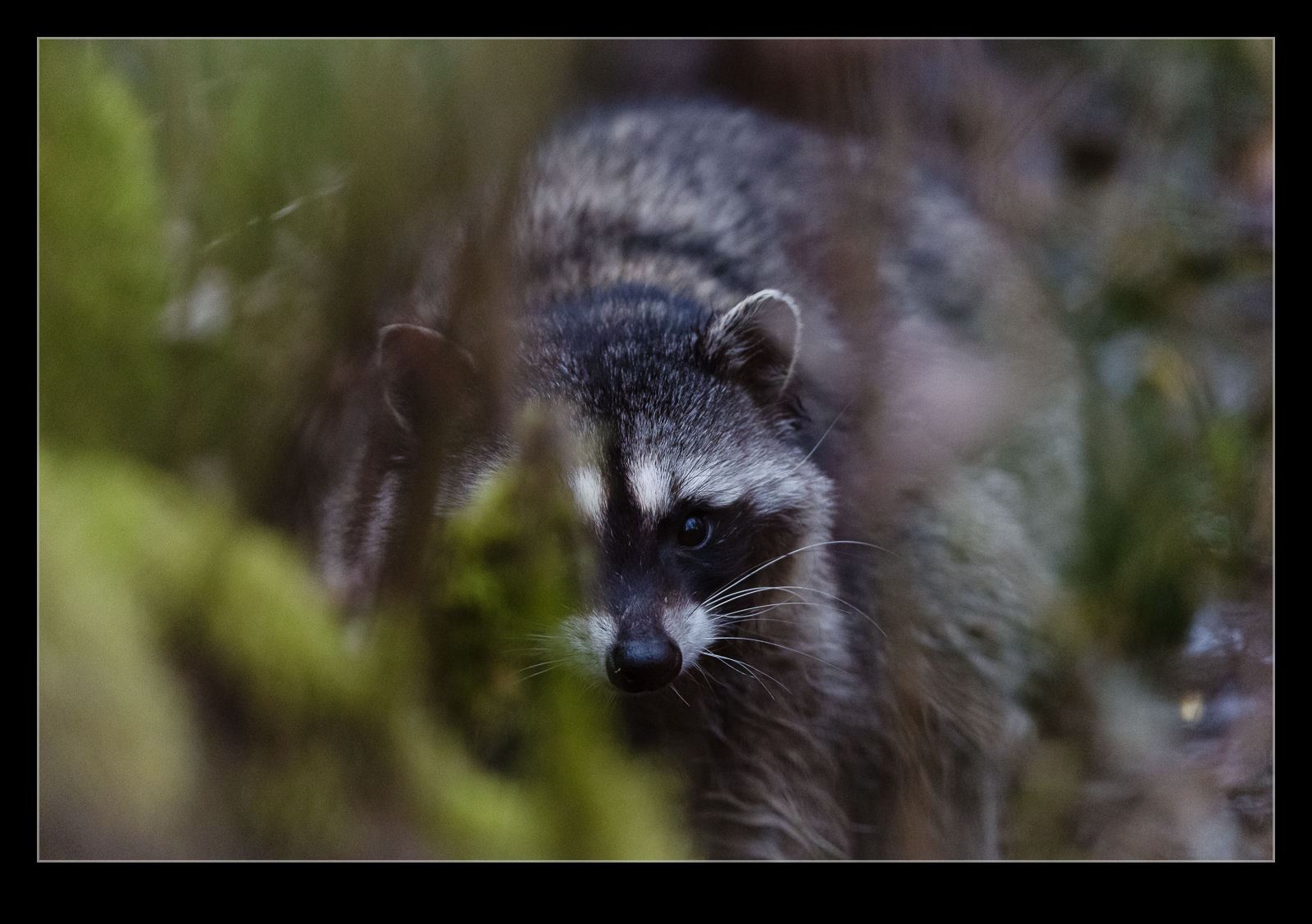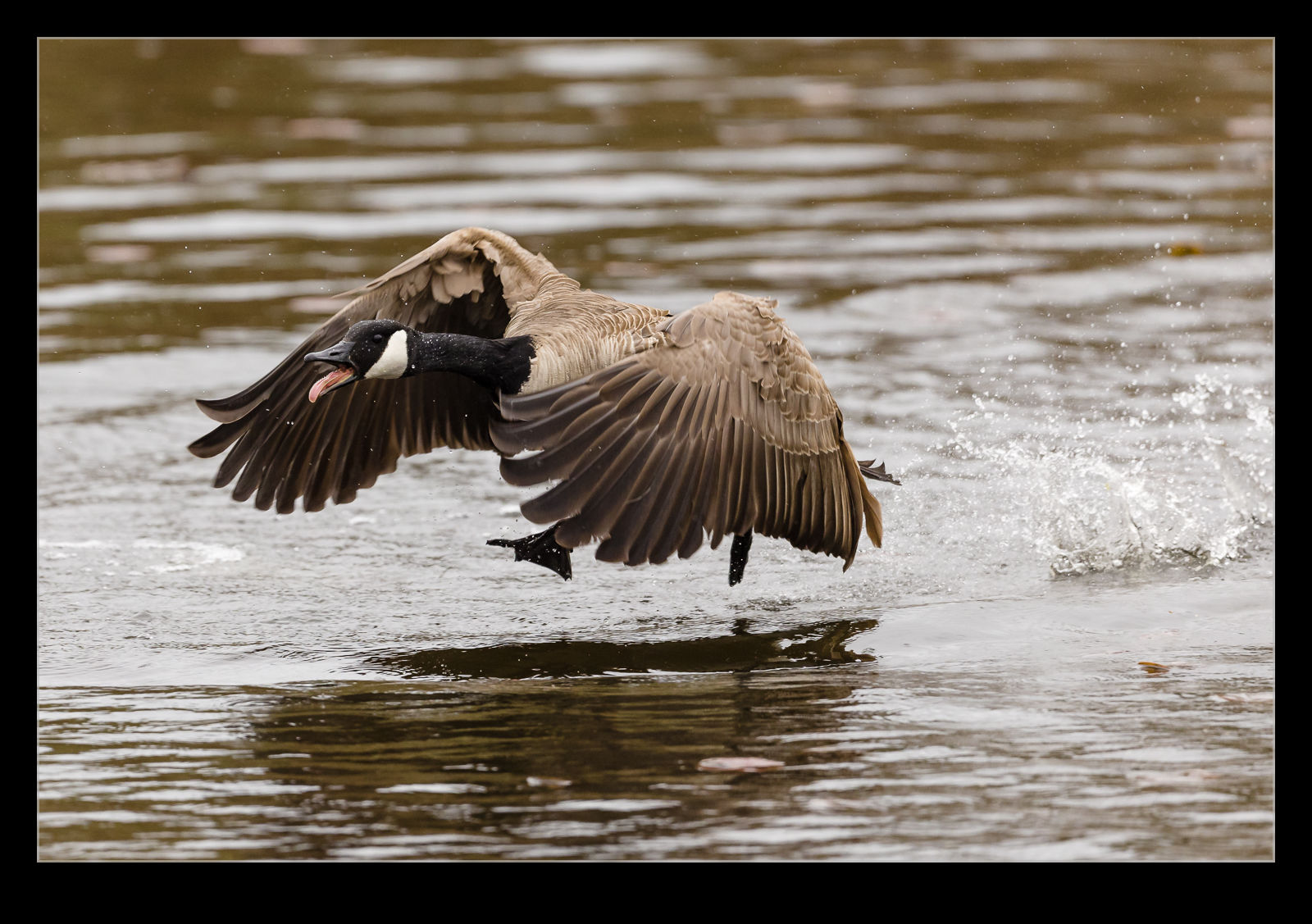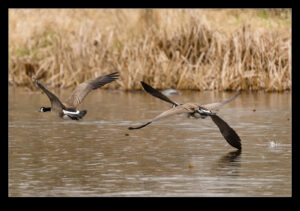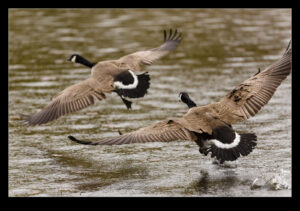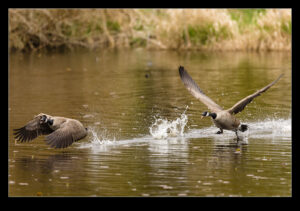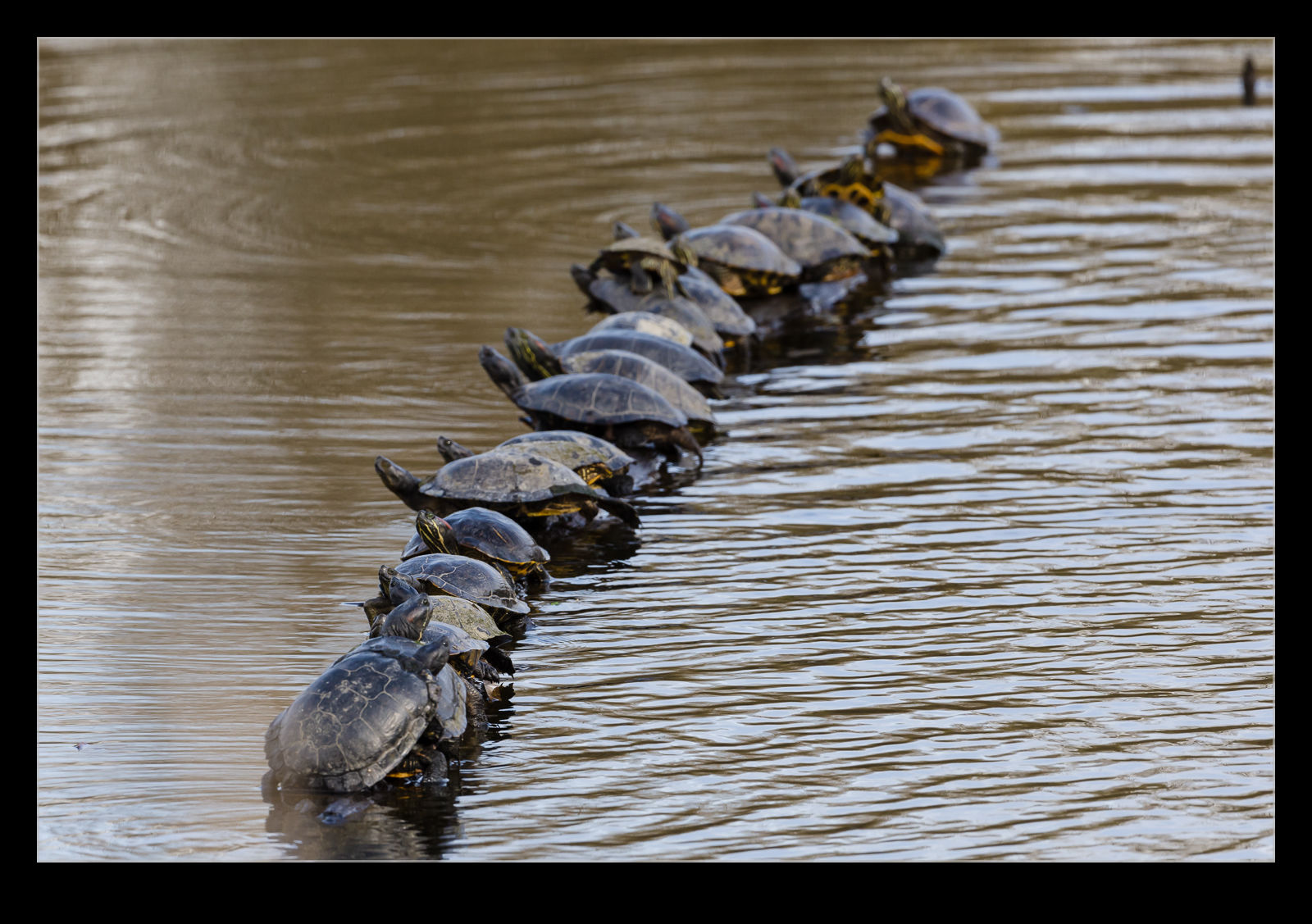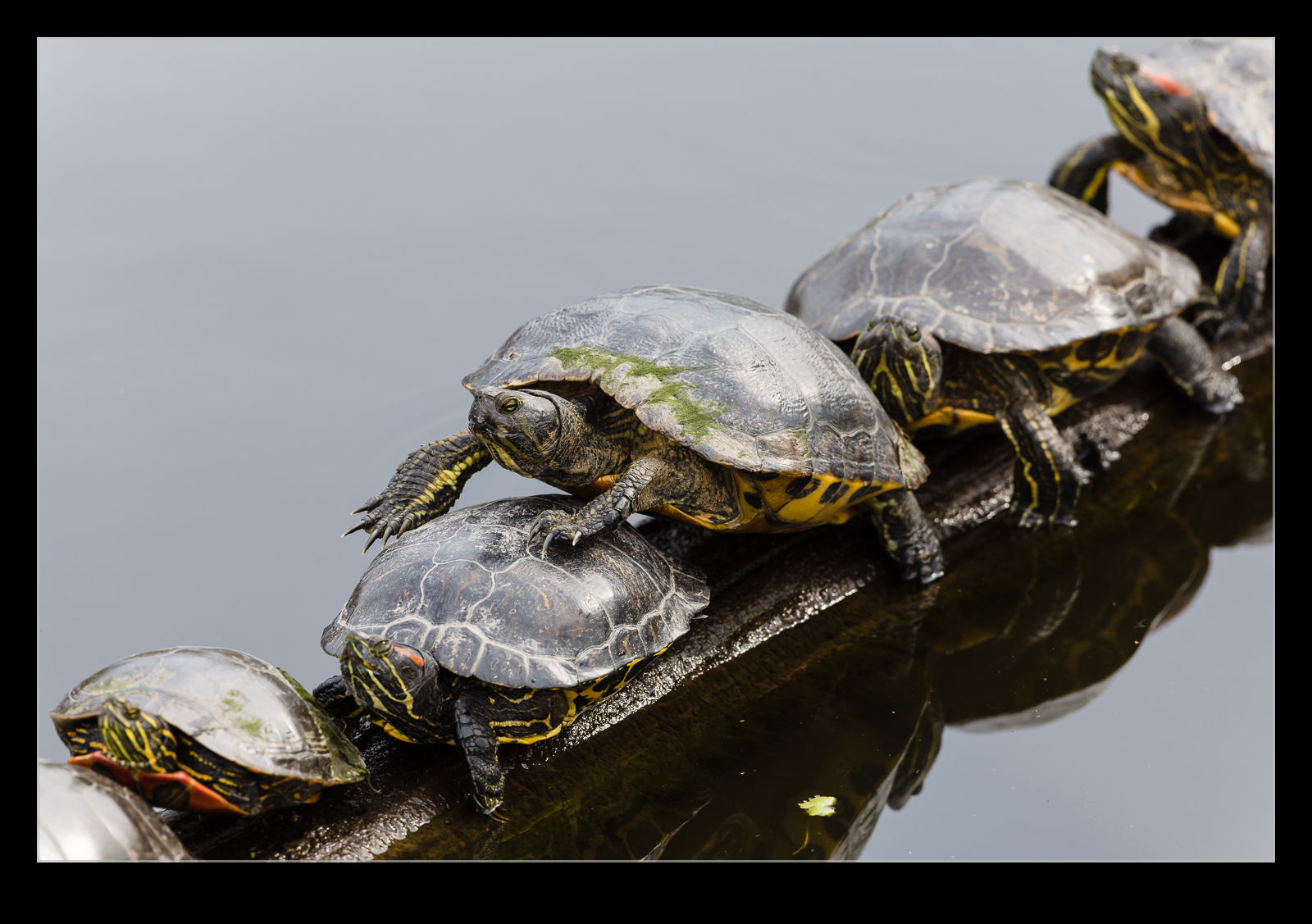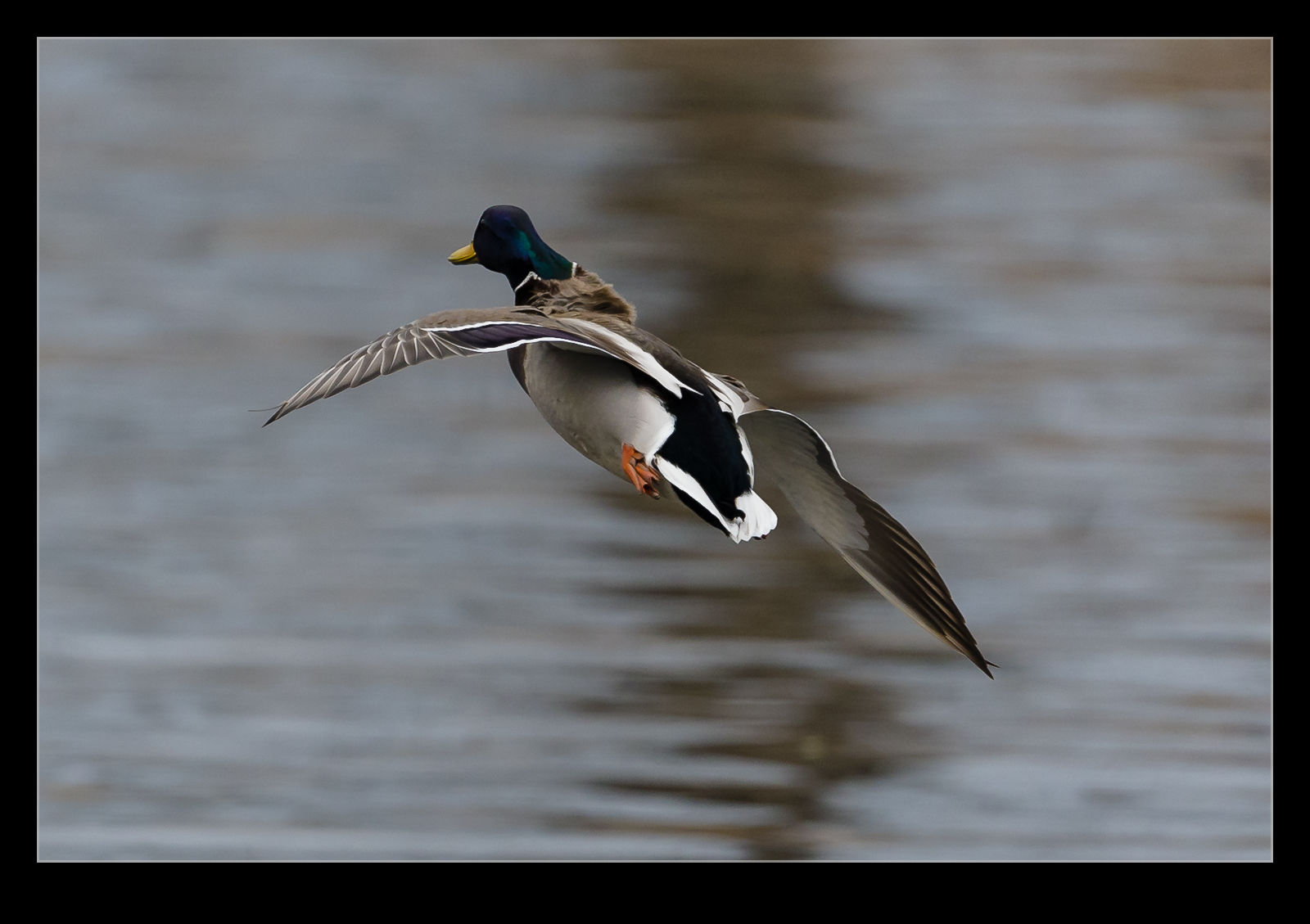 Watching the bird flying around Juanita Bay can bring out the aero guy in me. I was watching some ducks flying across the water and coming in to land. While the wings were working hard, it was also possible to see the feathers fluttering on the back of the duck just below the neck. Clearly, the flow is separating in this location when they are maxing out the lift and the feather get disturbed by the separation. Does anyone else but me care? Probably not so maybe no one is even reading at this point!
Watching the bird flying around Juanita Bay can bring out the aero guy in me. I was watching some ducks flying across the water and coming in to land. While the wings were working hard, it was also possible to see the feathers fluttering on the back of the duck just below the neck. Clearly, the flow is separating in this location when they are maxing out the lift and the feather get disturbed by the separation. Does anyone else but me care? Probably not so maybe no one is even reading at this point!
Tag Archives: Juanita bay
Stickleback Snacks
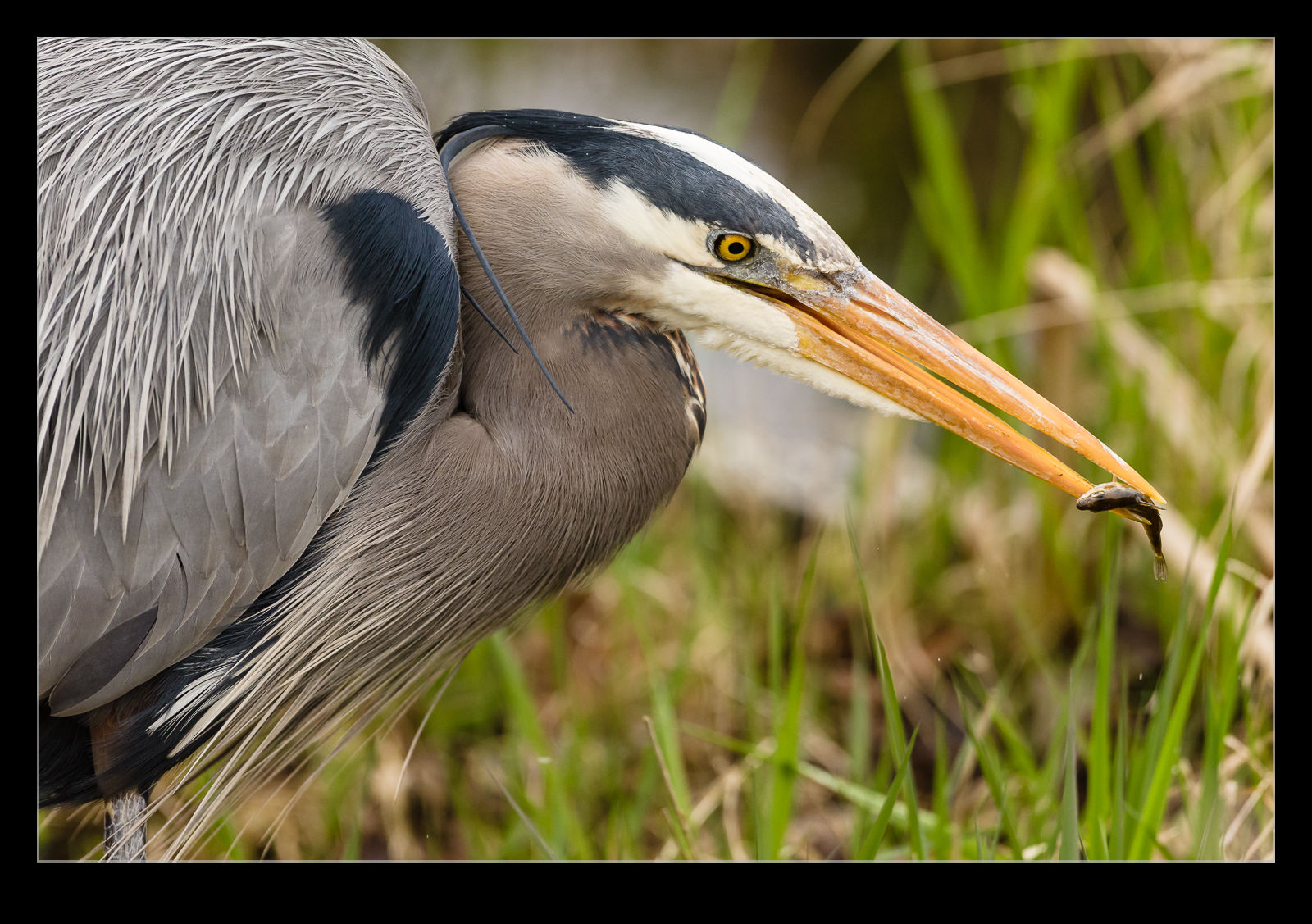 It is possible to spend a lot of time watching a heron hunting without seeing anything happen. Their ability to stay still for extended periods of time awaiting prey is impressive. You hope you will get some catch at some point and that it won’t happen behind something that stops you getting a shot. One of the herons in Juanita Bay was having some good luck catching sticklebacks. The only problem was that it would often get other debris at the same time.
It is possible to spend a lot of time watching a heron hunting without seeing anything happen. Their ability to stay still for extended periods of time awaiting prey is impressive. You hope you will get some catch at some point and that it won’t happen behind something that stops you getting a shot. One of the herons in Juanita Bay was having some good luck catching sticklebacks. The only problem was that it would often get other debris at the same time.
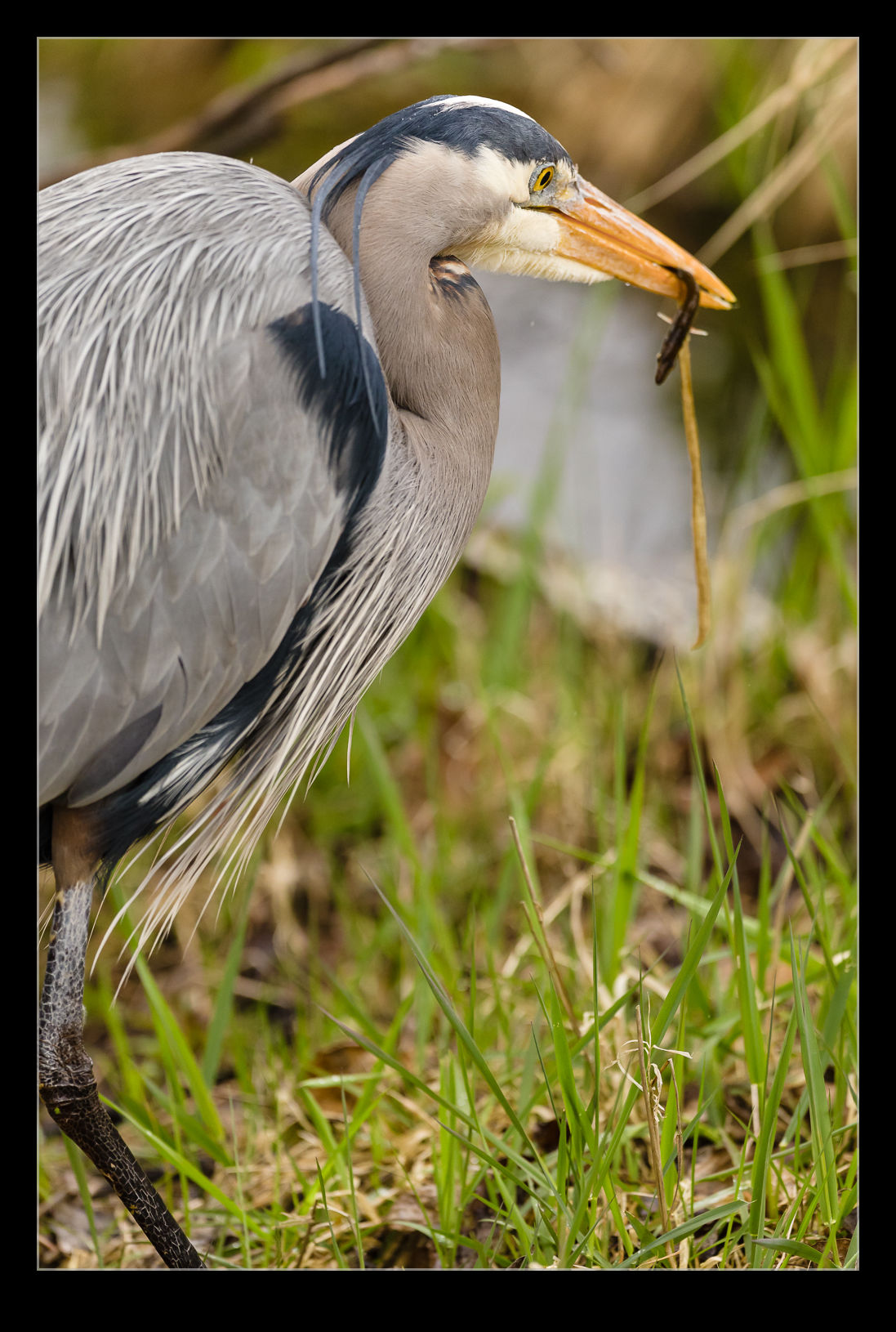 After the strike, the bill would have a fish wriggling around in it and some leaves or twigs alongside. The trick was how to release the surplus material to allow the fish to be eaten without giving the fish a chance to head for freedom. Clearly this is a regular feature of a heron’s life and the technique has been practiced but I watched with anticipation as it got rid of what it didn’t need and allowed the fish to be swallowed. The stills don’t give you much idea of how much wriggling was still going on as the fish went down the throat!
After the strike, the bill would have a fish wriggling around in it and some leaves or twigs alongside. The trick was how to release the surplus material to allow the fish to be eaten without giving the fish a chance to head for freedom. Clearly this is a regular feature of a heron’s life and the technique has been practiced but I watched with anticipation as it got rid of what it didn’t need and allowed the fish to be swallowed. The stills don’t give you much idea of how much wriggling was still going on as the fish went down the throat!
Heron Head Shape Is Unusual
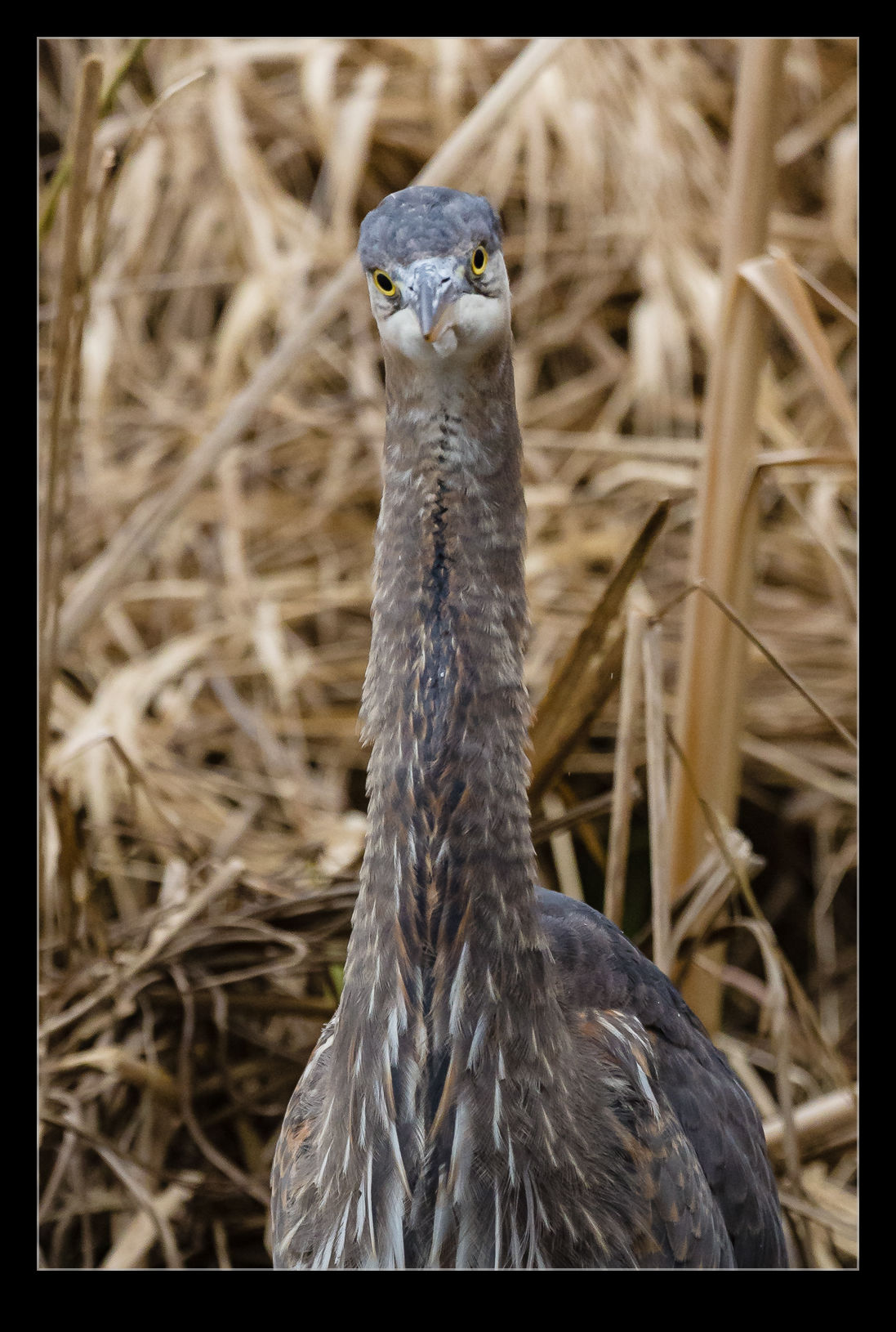 Photographing herons is kind of a fun thing to do since they are such a large bird and so distinctive. Having got so close to some recently, I have got a lot more photos of them from different angles and this has included some head on shots of them. I had not appreciated the shape of the head of the heron until getting this view. The head is narrow, as I had know, but it is tapered. While I thought the eyes were on the sides of the head, the shaping means that they have more of a forward view than I had realized which is obviously important for hunting for fish and perceiving depth when preparing to strike. Head on it looks like a very different bird!
Photographing herons is kind of a fun thing to do since they are such a large bird and so distinctive. Having got so close to some recently, I have got a lot more photos of them from different angles and this has included some head on shots of them. I had not appreciated the shape of the head of the heron until getting this view. The head is narrow, as I had know, but it is tapered. While I thought the eyes were on the sides of the head, the shaping means that they have more of a forward view than I had realized which is obviously important for hunting for fish and perceiving depth when preparing to strike. Head on it looks like a very different bird!
Raccoons On Patrol
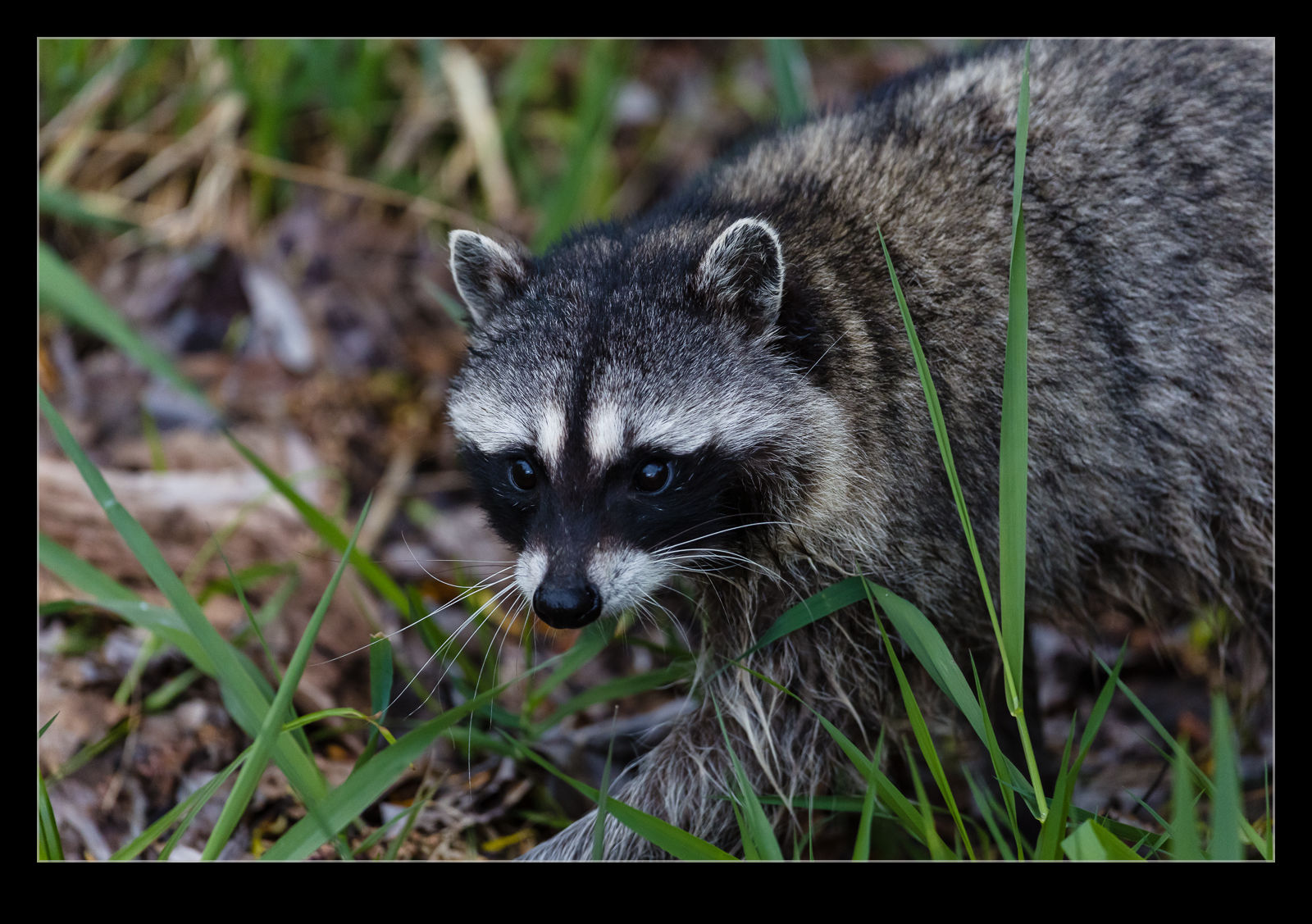 My recent visits to Juanita Bay have provided a variety of different wildlife encounters. On a recent trip down there later on a weekend evening, I got something I wasn’t expecting. I saw something moving on the shore. It turned out to be a raccoon. It was working its way along the shore and I headed around the boardwalk hoping to be in position as it continued on its way. Moving as quickly as I could without making too much noise, I got to a spot ahead of it. It turned out there were two of them!
My recent visits to Juanita Bay have provided a variety of different wildlife encounters. On a recent trip down there later on a weekend evening, I got something I wasn’t expecting. I saw something moving on the shore. It turned out to be a raccoon. It was working its way along the shore and I headed around the boardwalk hoping to be in position as it continued on its way. Moving as quickly as I could without making too much noise, I got to a spot ahead of it. It turned out there were two of them!
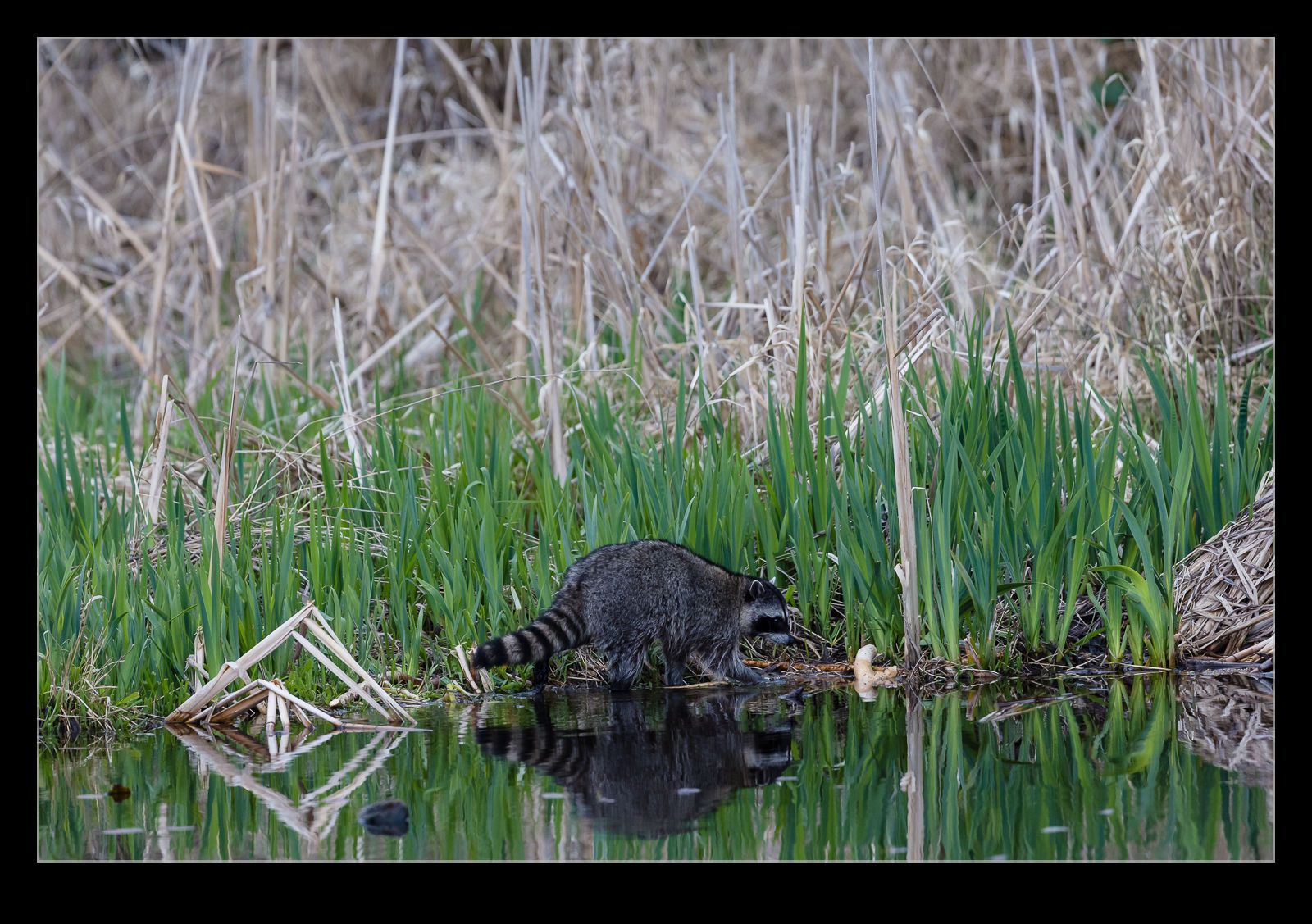 Once they saw me, they paused for a while. Clearly, they were considering a change of plans. However, I wasn’t moving much or making any noise so they decided I wasn’t a threat and continued on their way. They came under the boardwalk and up the other side and then off into the brush. With so much growth around them, getting a clear shot was tricky but I managed to get a few as they traversed the area, keeping a wary eye on me just in case.
Once they saw me, they paused for a while. Clearly, they were considering a change of plans. However, I wasn’t moving much or making any noise so they decided I wasn’t a threat and continued on their way. They came under the boardwalk and up the other side and then off into the brush. With so much growth around them, getting a clear shot was tricky but I managed to get a few as they traversed the area, keeping a wary eye on me just in case.
Territorial Goose With Attitude
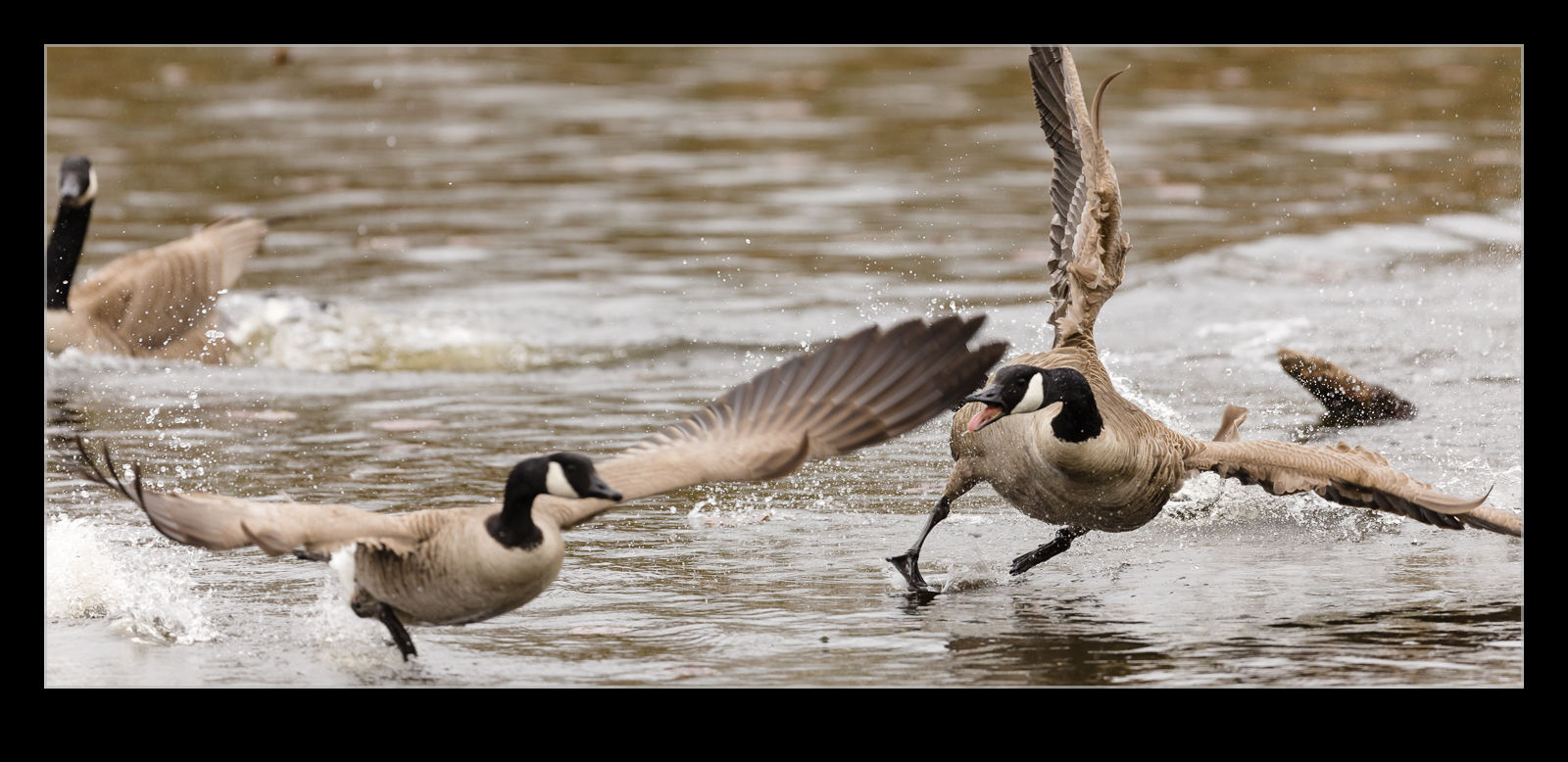 As the days get longer, love is in the air and this includes the world of geese. Suddenly the geese get very territorial both about potential mates and potential nesting locations. Fights can break out with very little warning. One of the geese in Juanita Bay was definitely in no mood for any competition. It was taking on anyone that happened to be in the way, whether they were a threat or not. Not just one at a time, either. A few other geese were in the area and they each got a dose of its attitude.
As the days get longer, love is in the air and this includes the world of geese. Suddenly the geese get very territorial both about potential mates and potential nesting locations. Fights can break out with very little warning. One of the geese in Juanita Bay was definitely in no mood for any competition. It was taking on anyone that happened to be in the way, whether they were a threat or not. Not just one at a time, either. A few other geese were in the area and they each got a dose of its attitude.
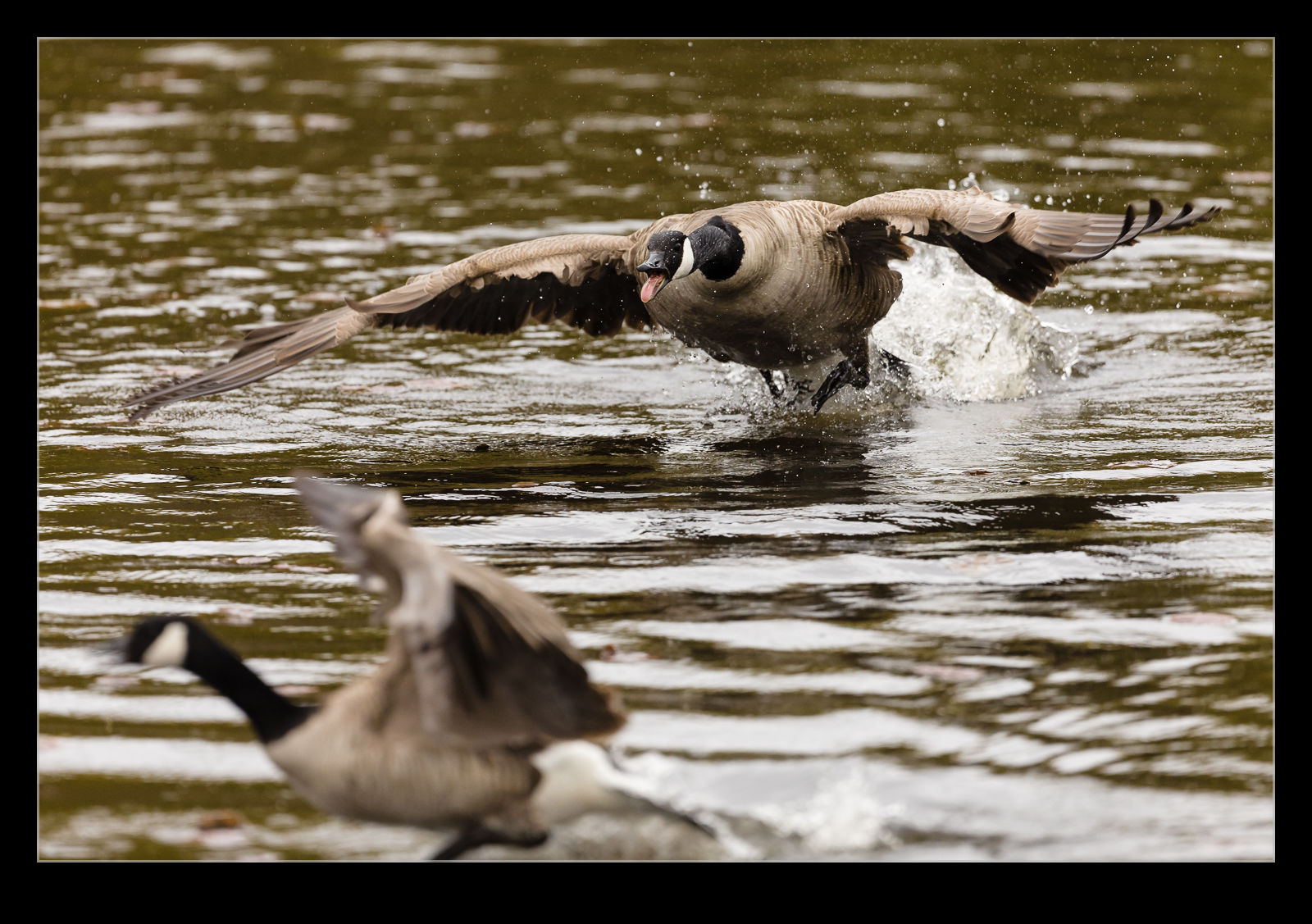 The flurry of activity when geese start sparring can often be intense but brief. In this case, the aggravation continued for quite a while. One goose would lunge at the others and they would settle again before he came at them once more. Much splashing of water, flapping of wings, honking and waving of tongues ensued. The goose that was chasing the others would be mouth open and tongue out as it charged at them. The tongue is a nasty looking thing on a goose. Lots of barbs on its surface.
The flurry of activity when geese start sparring can often be intense but brief. In this case, the aggravation continued for quite a while. One goose would lunge at the others and they would settle again before he came at them once more. Much splashing of water, flapping of wings, honking and waving of tongues ensued. The goose that was chasing the others would be mouth open and tongue out as it charged at them. The tongue is a nasty looking thing on a goose. Lots of barbs on its surface.
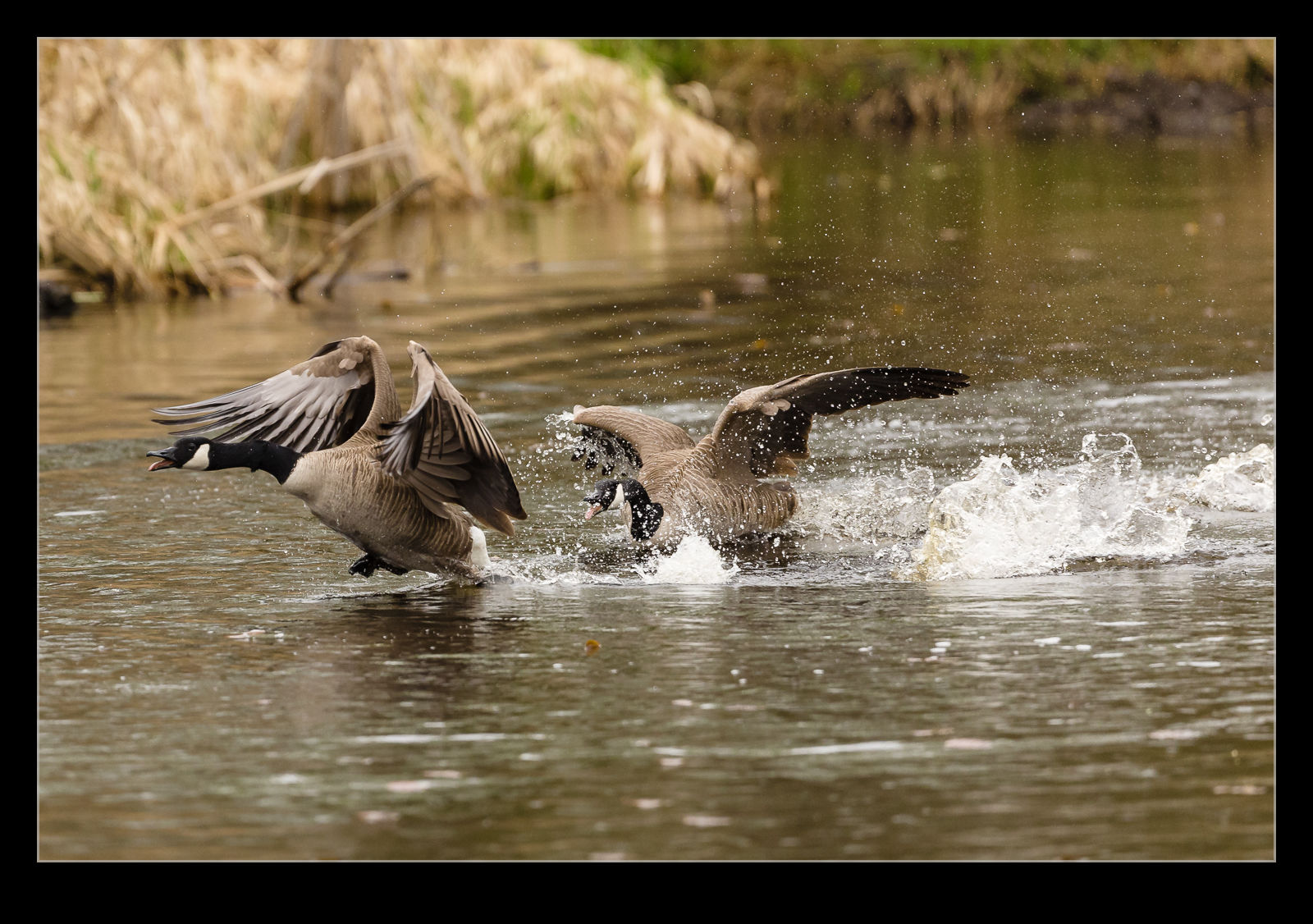 After a few charges back and forth across the inlet, the others started to get the message. They took off and headed across the bay. The main goose was not satisfied yet, though. He took off after them and chased them well across the bay before deciding that the message had been received upon which he returned to the inlet to be ready for the next round of intruders.
After a few charges back and forth across the inlet, the others started to get the message. They took off and headed across the bay. The main goose was not satisfied yet, though. He took off after them and chased them well across the bay before deciding that the message had been received upon which he returned to the inlet to be ready for the next round of intruders.
How Many Turtles Is Too Many Turtles?
 Turtles are a common sight in Juanita Bay. There are some logs in the shallows that attract the turtles when the sun is out. They come up from the depths and bask on the logs to warm themselves up. On a given day, there will usually be a bunch of them. What I had not seen before was quite so many of them. The logs were full of turtles and those that couldn’t find a spot had climbed on top of those that could. One of the kids was counting them and came up with over 60 of them in this one little area. It was quite the turtle fest.
Turtles are a common sight in Juanita Bay. There are some logs in the shallows that attract the turtles when the sun is out. They come up from the depths and bask on the logs to warm themselves up. On a given day, there will usually be a bunch of them. What I had not seen before was quite so many of them. The logs were full of turtles and those that couldn’t find a spot had climbed on top of those that could. One of the kids was counting them and came up with over 60 of them in this one little area. It was quite the turtle fest.
Wilson’s Snipes Got The Twitchers Excited
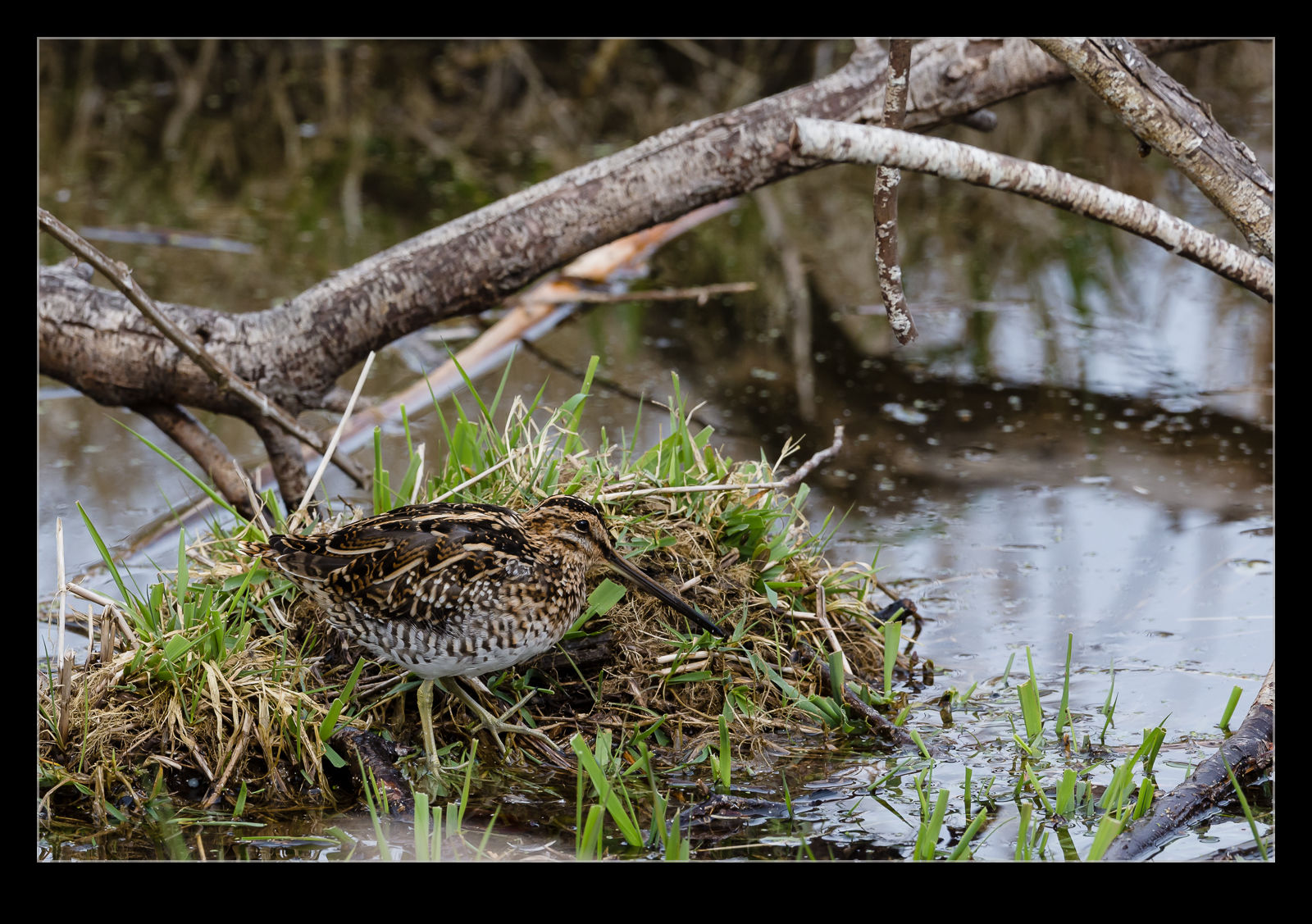 I am not a bird expert so, while I can recognize a variety of different birds, there are plenty that I have absolutely no clue about. However, Juanita Bay is a popular spot with the ornithologists and I can learn a bit from them. A couple was chatting with me on one of the boardwalks about Wilson’s Snipes. They thought they could see them on one of the shoreline areas but couldn’t be sure. I bumped in to the same people on the other side of the shore and they confirmed that the snipes were there.
I am not a bird expert so, while I can recognize a variety of different birds, there are plenty that I have absolutely no clue about. However, Juanita Bay is a popular spot with the ornithologists and I can learn a bit from them. A couple was chatting with me on one of the boardwalks about Wilson’s Snipes. They thought they could see them on one of the shoreline areas but couldn’t be sure. I bumped in to the same people on the other side of the shore and they confirmed that the snipes were there.
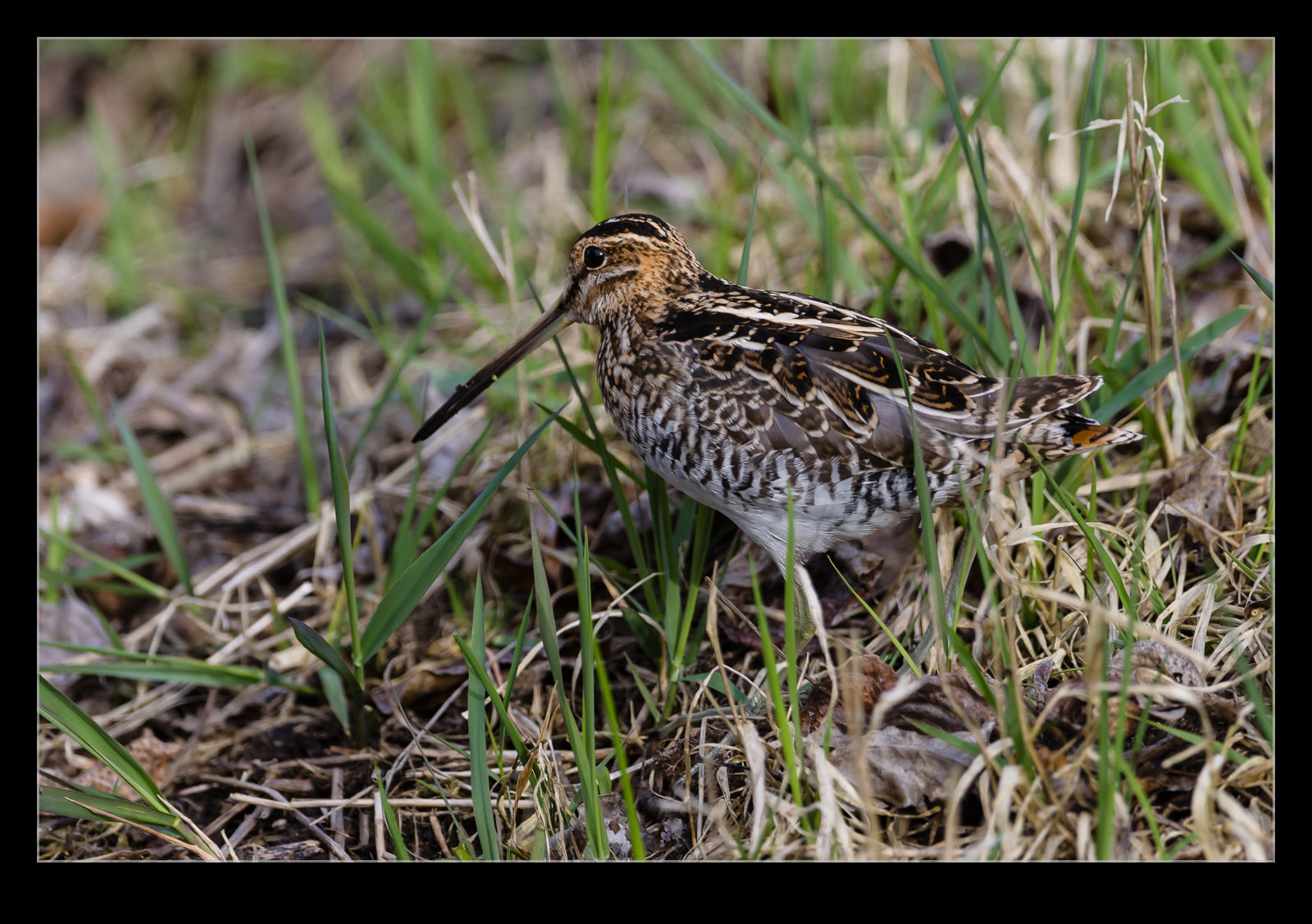 At first they were pointing out a couple of them. As we spent a bit more time watching, it turned out that there were loads of them. They weren’t easy to see given how well their camouflage worked but, once you had got the hang of it, finding the others got a lot easier. I don’t think this is a rare bird so this wasn’t an amazing discovery that we were making but they were still pretty excited about it so I was too.
At first they were pointing out a couple of them. As we spent a bit more time watching, it turned out that there were loads of them. They weren’t easy to see given how well their camouflage worked but, once you had got the hang of it, finding the others got a lot easier. I don’t think this is a rare bird so this wasn’t an amazing discovery that we were making but they were still pretty excited about it so I was too.
Heron On The Hunt
 Herons are not known for being too happy about people nearby but the ones in Juanita Bay are very used to the people on the boardwalks and they don’t seem to be bothered about how close they are. I had spent a fair bit of time on one boardwalk chatting to some photographers and we had discussed the heron that was over by the next boardwalk. As we headed our separate ways, I figured I would go across to see if I could get any shots of the bird.
Herons are not known for being too happy about people nearby but the ones in Juanita Bay are very used to the people on the boardwalks and they don’t seem to be bothered about how close they are. I had spent a fair bit of time on one boardwalk chatting to some photographers and we had discussed the heron that was over by the next boardwalk. As we headed our separate ways, I figured I would go across to see if I could get any shots of the bird.
 The light was fading fast so I was shooting at higher ISOs than I would have liked but I was pleasantly surprised that the R3 seemed to have a cleaner result than I would have expected with the 1DXII. Technology does move on of course, but I think thinks have plateaued a bit in that area so this was a nice result. The heron was quite close in and, since I only had the 500 with me, I had to chose my location carefully. The eye tracking did a pretty impressive job with the bird as long as it was not looking directly at me (or away of course).
The light was fading fast so I was shooting at higher ISOs than I would have liked but I was pleasantly surprised that the R3 seemed to have a cleaner result than I would have expected with the 1DXII. Technology does move on of course, but I think thinks have plateaued a bit in that area so this was a nice result. The heron was quite close in and, since I only had the 500 with me, I had to chose my location carefully. The eye tracking did a pretty impressive job with the bird as long as it was not looking directly at me (or away of course).
 I did got with high frame rates to try and catch strikes with the food. Unfortunately, the bird was not having a great time. I got one strike but it was not a fish but a piece of bark. Another “catch” provided to be a stick. Maybe this heron is the sharpest bird in the bay. Overall, I was pleased with the results and I was more happy about the ability to let the autofocus work across the image so I could compose how I wanted rather than based on the location of autofocus points.
I did got with high frame rates to try and catch strikes with the food. Unfortunately, the bird was not having a great time. I got one strike but it was not a fish but a piece of bark. Another “catch” provided to be a stick. Maybe this heron is the sharpest bird in the bay. Overall, I was pleased with the results and I was more happy about the ability to let the autofocus work across the image so I could compose how I wanted rather than based on the location of autofocus points.
Coyote Comes To The Lake
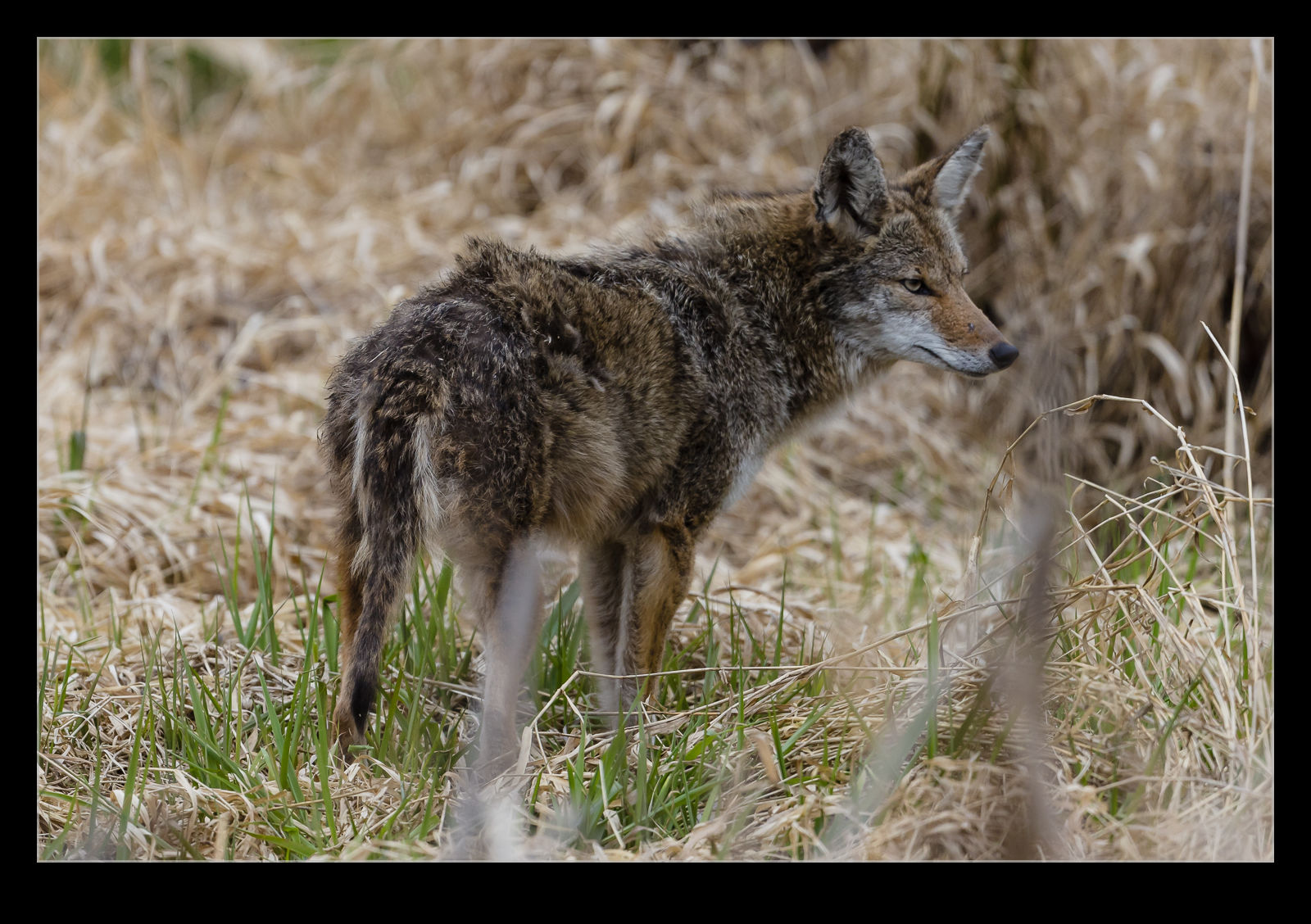 I went to Juanita Bay in Kirkland on a sunny Saturday afternoon to have an experiment with the R3. I wanted to try shooting something different and the bay is always a good spot for some wildlife activity. I was standing on one of the boardwalks, chatting to a couple of photographers that had a similar idea. We had just been discussing a bobcat one of them had seen in the area near us when I looked across and saw some movement in exactly that area.
I went to Juanita Bay in Kirkland on a sunny Saturday afternoon to have an experiment with the R3. I wanted to try shooting something different and the bay is always a good spot for some wildlife activity. I was standing on one of the boardwalks, chatting to a couple of photographers that had a similar idea. We had just been discussing a bobcat one of them had seen in the area near us when I looked across and saw some movement in exactly that area.
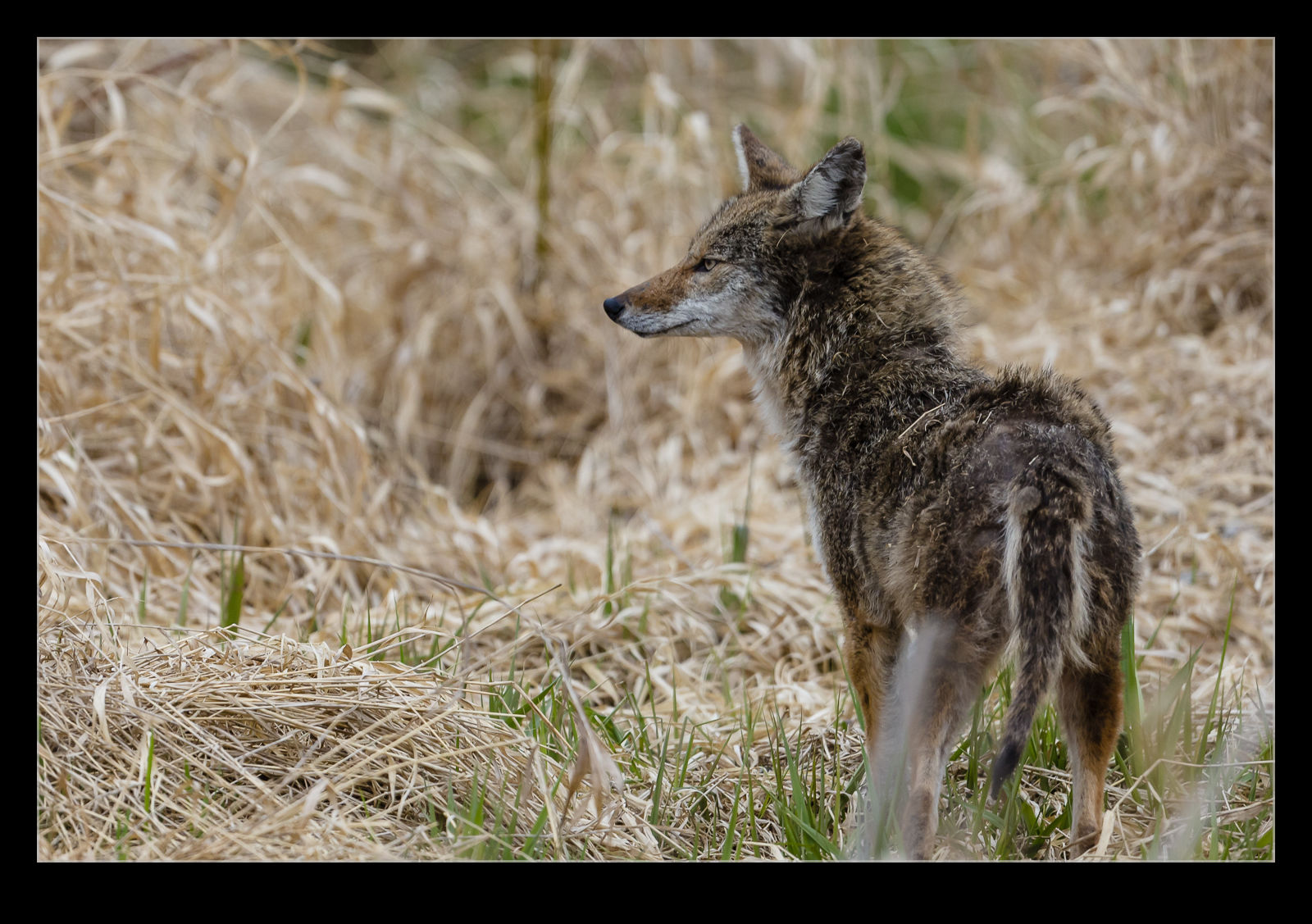 It wasn’t a bobcat which was a shame. However, it was a coyote. It walked over in our direction, heading for a carcass of a fish that had apparently been there for a few days. It stopped briefly and then turned around and headed back into the bushes. I managed to get a few shots of it before it was out of a clear line of sight.
It wasn’t a bobcat which was a shame. However, it was a coyote. It walked over in our direction, heading for a carcass of a fish that had apparently been there for a few days. It stopped briefly and then turned around and headed back into the bushes. I managed to get a few shots of it before it was out of a clear line of sight.
Swans on the Lake
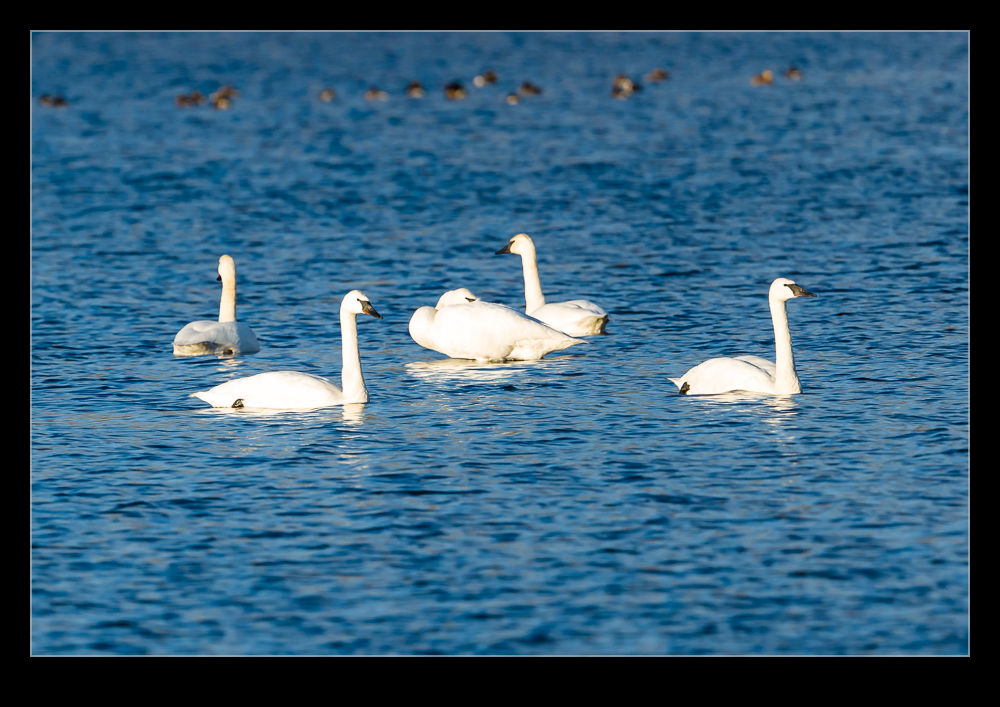 When I was still at college (and because I am an old git, I was shooting on film), I spent some summers in Huntingdon, a town in Cambridgeshire that my mum lived in at the time. The river Ouse ran through the town (actually separate Huntingdon from Godmanchester) and there was a park along the river that I walked in frequently. One afternoon I was walking there when a swan took off on the water alongside me and I grabbed a single shot of it that was one I was really happy with. (After I write this, I will go back through my stuff to see if I have a good scan of it to add to the bottom of this post.)
When I was still at college (and because I am an old git, I was shooting on film), I spent some summers in Huntingdon, a town in Cambridgeshire that my mum lived in at the time. The river Ouse ran through the town (actually separate Huntingdon from Godmanchester) and there was a park along the river that I walked in frequently. One afternoon I was walking there when a swan took off on the water alongside me and I grabbed a single shot of it that was one I was really happy with. (After I write this, I will go back through my stuff to see if I have a good scan of it to add to the bottom of this post.)
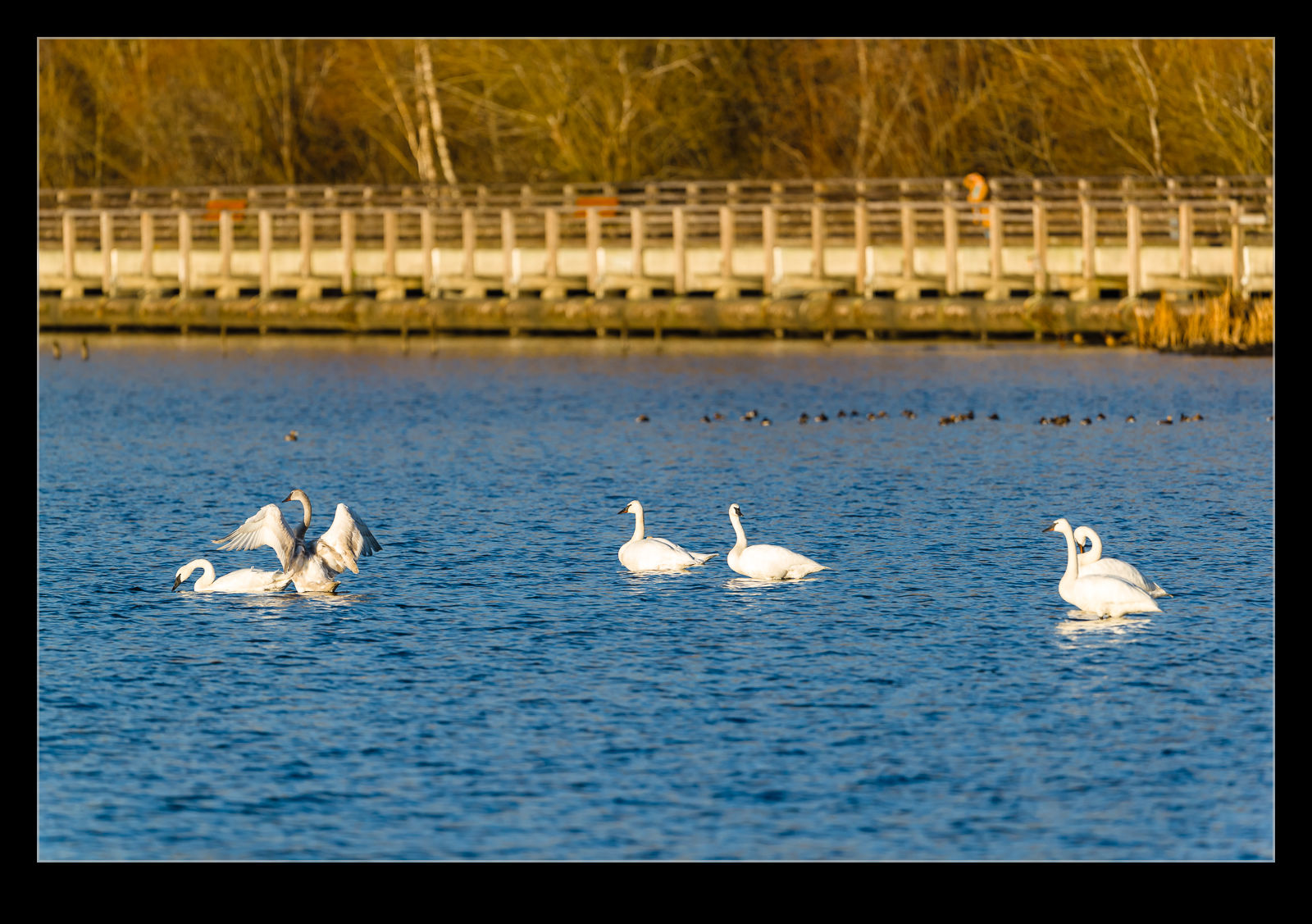 Ever since I have been shooting digitally, I have wanted to get shots of swans flying. However, I haven’t lived in places where swans were very common. That has changed since moving here. There are some wetlands north of here that are heavily populated by swans and I shall be checking them out before too long. However, we do get some swans in Juanita Bay. Nancy and I were out for a walk a while back when three pairs of swans took off from the water near us and flew right by. You can probably guess that I wasn’t carrying a camera that day.
Ever since I have been shooting digitally, I have wanted to get shots of swans flying. However, I haven’t lived in places where swans were very common. That has changed since moving here. There are some wetlands north of here that are heavily populated by swans and I shall be checking them out before too long. However, we do get some swans in Juanita Bay. Nancy and I were out for a walk a while back when three pairs of swans took off from the water near us and flew right by. You can probably guess that I wasn’t carrying a camera that day.
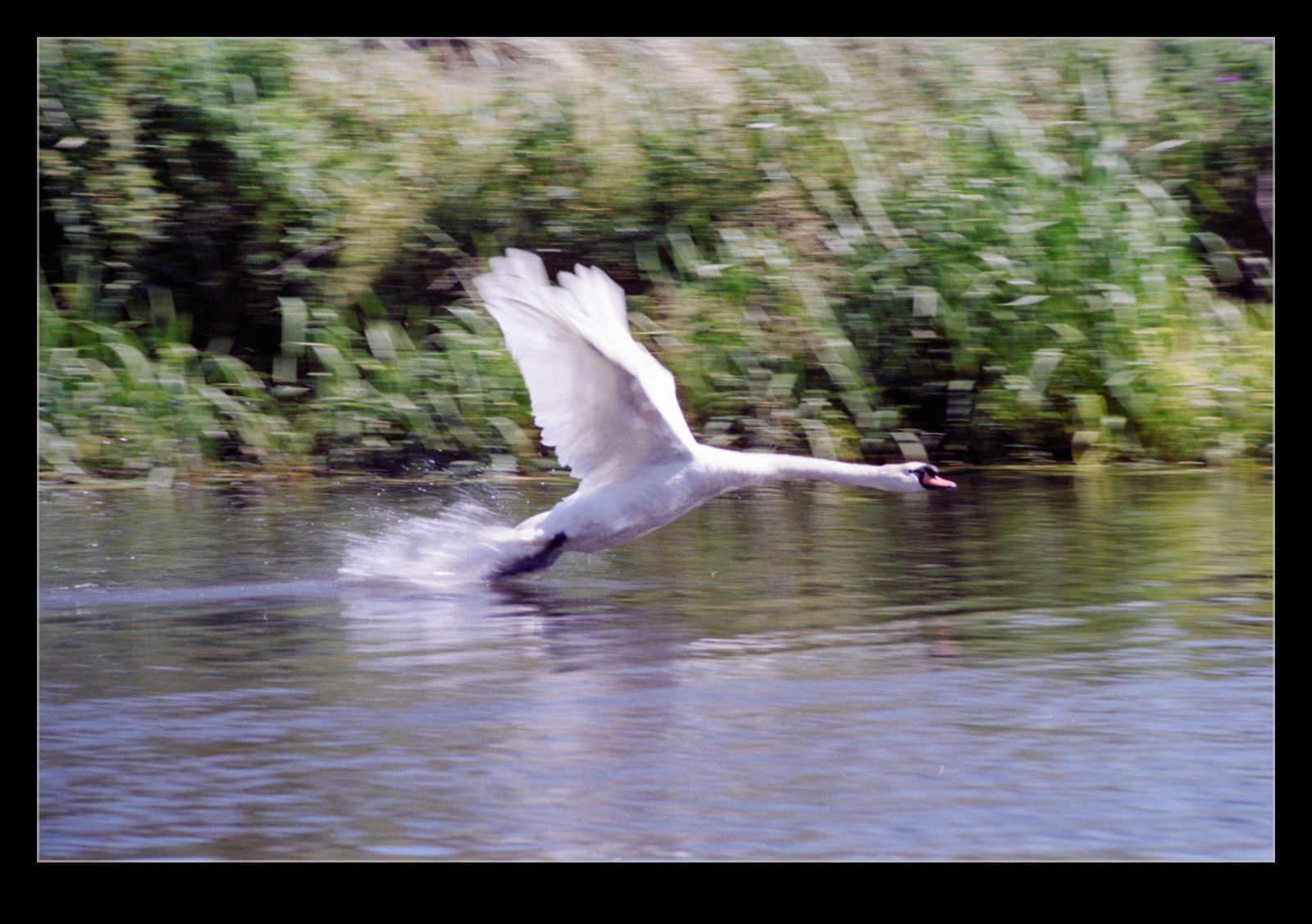 A week or so later, I was back at Juanita Bay with the camera this time and there were swans hanging out in the same area. I thought that, this time, my planning would pay dividends. Sadly, that was not to be. They seemed very content where they were and all I got was pictures of them sleeping, swimming or occasionally stretching their wings. I shall be back for another attempt though.
A week or so later, I was back at Juanita Bay with the camera this time and there were swans hanging out in the same area. I thought that, this time, my planning would pay dividends. Sadly, that was not to be. They seemed very content where they were and all I got was pictures of them sleeping, swimming or occasionally stretching their wings. I shall be back for another attempt though.
